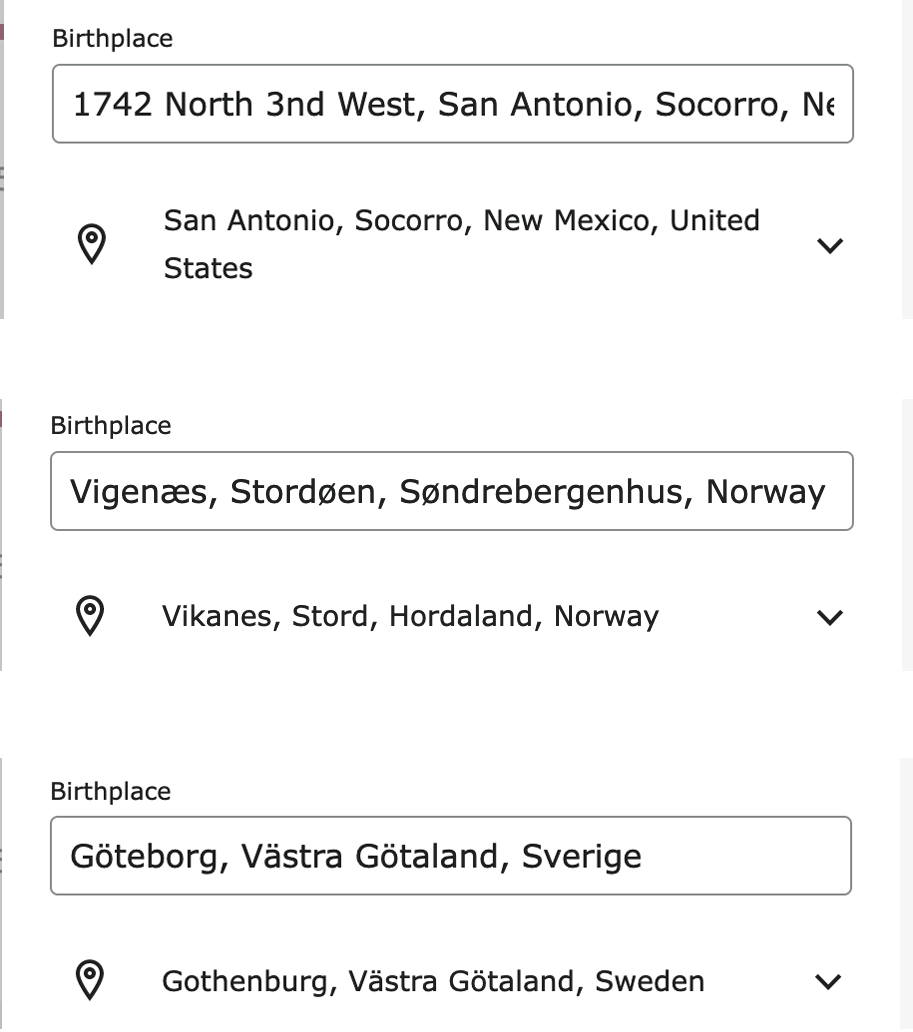Standardization sign
Comments
-
You can easily see if a place name is standardized or not:
Not standardized:
Standardized:
This is even more clear than in the old pages where there was just the red exclamation point with the explanation of what this meant way over in the right hand column.
Now if you are really referring to the map pin, which never had anything to do with whether a place name was standardized or not, please carefully examine these three examples of place names that are correctly entered in Family Tree, are correctly standardized, but never had one of those exceedingly misunderstood and misused map pins:
I repeat: All of these are correctly entered. None of these would have a map pin on the old pages. None of them need any correction at all.
Here is how the editing box looks for each of them:
All of these are correctly standardized as shown by the fact that none of them look like this:
The trouble with those map pins is that they led people to "correct" entries like those above that are all correct and degrade the originally entered data.
2 -
There's a very common logical fallacy at the bottom of this. The thinking is that if A implies B, then not-A must imply not-B:
"Tom is a cat; Bob is not Tom, therefore Bob must not be a cat."
"Entries with a pin are standardized. This entry doesn't have a pin, therefore it must not be standardized."
The conclusions "Bob is not a cat" and "this entry isn't standardized" make exactly the same amount of sense -- which is to say, none whatsoever.
0






